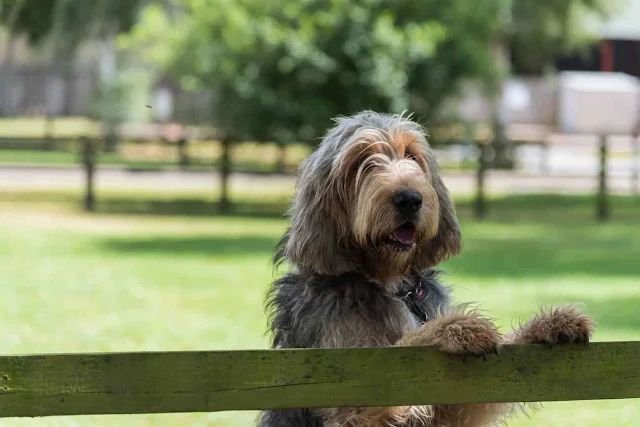Otterhound Dog Breed Information:
The large and rough-coated Otterhound was originally bred for hunting otter in England. Built for work, the dog breed has a keen nose and renowned stamina. This is an uncommon breed, with fewer than ten litters born each year in the United States and Canada.
Otterhound Dog Breed Group: Hound Dogs.
Otterhound Dog Breed Height: 24 to 27 inches tall at the shoulder.
Otterhound Dog Breed Weight: Male: 115 pounds and Female: 80 pounds.
Otterhound Dog Breed Life Span: 10 to 12 years.
More About This Dog Breed:
Otterhounds are enthusiastic and loud barkers. But don't expect yours to be a guard dog he's far too friendly for that. Otterhounds enjoy being outdoors, but they're best suited to living daily life inside the house with their families. The Otterhound loves food and can become obese if you don't monitor his diet. Big dog, bigger expense. Everything for a big dog costs more, from food to grooming to veterinary care.
Otterhound Dog Breed History:
While it's fairly certain that Otterhounds descended from Bloodhounds, some think that they might also be related to French Griffons because of the distinctive fold of their ears. The breed was developed in England to hunt and destroy otters, which were decimating the fish in English rivers.
Otter hunting, largely enjoyed by the nobility, was the first organized sport in England that used packs of scent hounds. It was first mentioned in the 12th century, during the reign of Henry II. The Otterhound, however, was not mentioned as a specific breed for another 200 years.
Otterhound Dog Breed Size:
Males are approximately 27 inches tall and weigh about 115 pounds. Females are approximately 24 inches tall and weigh about 80 pounds.
Otterhound Dog Breed Personality:
Big, boisterous, and affectionate, the Otterhound was bred in medieval England for the now-outlawed activity of otter hunting. This scarce breed is known for his dense shaggy coat, webbed feet, acute sense of smell, and affinity for swimming. These big, bouncy hounds were ideally suited for otter hunting.
Also Read This : All Dog Breeds - Names and Pictures | Complete List of Dog Profiles
Otterhound Dog Breed Health:
Otterhounds are generally healthy, but like all breeds, they're prone to certain health conditions. Not all Otterhounds will get any or all of these diseases:
Gastric dilatation-volvulus.
Hip Dysplasia.
Canine Idiopathic Thrombocytopenia (CIT).
Otterhound Dog Breed Care:
Because of his large size and high activity needs, the Otterhound is not recommended for apartment dwellers or families without yards. He's perfect, however, for active families who can take him jogging or, better yet, swimming each day. If he has enough exercise, he's relatively inactive when inside the house.
Otterhound Dog Breed Feeding:
Recommended daily amount: 3 to 4.5 cups of high-quality dry food a day, divided into two meals.
Otterhound Dog Breed Coat Color And Grooming:
The Otterhound's coat color is any recognized hound color except liver and white, all white, or white with distinct black and tan patches. Black and tan grizzle is common. The shaggy Otterhound coat sheds and must be brushed at least once a week to avoid matting. The Otterhound coat is best kept au naturel, so it is not clipped. Brush your Otterhound's teeth at least two or three times a week to remove tartar buildup and the bacteria that lurk inside it. Trim his nails once or twice a month if your dog doesn't wear them down naturally to prevent painful tears and other problems.
Otterhound Dog Breed with Children And Other Pets:
The Otterhound is probably better suited to a family with older children, ages 10 and up. If properly trained and socialized, the Otterhound gets along well with other dogs.

